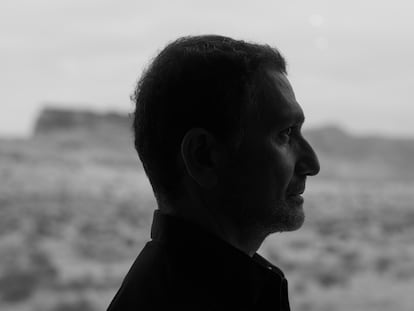Helicopter pads, infinity pools and wine cellars at 400 feet: The growing fever to build mansions in the sky
Indian billionaire Vijay Mallya’s new home embodies a trend that has been gaining steam among the global super-rich: hiding increasingly ambitious residencies on the roofs of skyscrapers
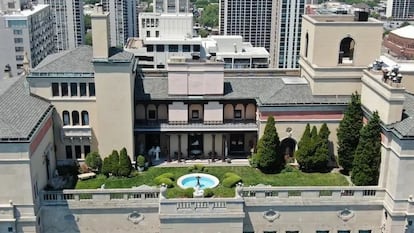
Chet Baker once sang on Everything Happens to Me, “I’ve mortgaged all my castles in the air.” Indian billionaire Vijay Mallya has reason to identify with that old jazz standard’s lyrics. He too is a man accustomed to making his dreams come true, as extravagant and crazy as they may be, and paying a high price to do so.
The flashiest of the castles in the air is located in Bangalore, capital of the state of Karnataka, which is located in the southeastern region of India. The building in question is a convincing, 400-foot-tall replica of the White House that was constructed on top of the roof of the Kingfisher Tower, a 33-story skyscraper. The flashy penthouse is a display of opulence and power that cost nearly $22 million. Plans for its creation were revealed for the first time in September 2023, and it seems to have been under construction since 2010.
Today it is nearly completed, but its owner may find it hard to enjoy his new home: Mallya, son and heir of the founder of the United Breweries business group, left India in March 2016 to flee to the United Kingdom after being involved in a series of financial scandals. He is an international fugitive, subject to an order of extradition that could be carried out at any moment — though it is not known with any certainty whether he continues to reside in London. Were he to return to India, he’d likely be housed in a penitentiary cell, rather than his Ionic-columned mansion atop Kingfisher Tower.

Pharaonic scale
Bangalore is a large city on the Deccan plateau, home to more than eight million inhabitants (or more than 15 million, if you count its entire metropolitan area), where ancient Hindu temples like the Nageshvara coexist with lavish avant-garde constructions such as the Infosys pyramid, the Bagmane technology park and the Pashmina towers. But Mallya’s castle in the air stands out, due to its size, exaggerated aesthetic and technical risks, which are notable even in a context as dramatic as that of the Indian metropolis.
Irfan Razack, spokesperson for the real estate company that oversaw the project, explained that building a mansion on a rooftop of this altitude has been “a formidable challenge,” but that the replica of the U.S. presidential residence was executed “exactly the way it was conceived.” The two-story home’s floorplan occupies 430,500 square feet and includes a private helicopter pad, an immense garden, an infinity pool, a gym, a terrace with a panoramic view, and a wine cellar. According to an article in Daily Mail, aside from its sky-high location, the primary difference between Bangalore’s White House and the original lies in scale: Washington’s version is a bit larger.
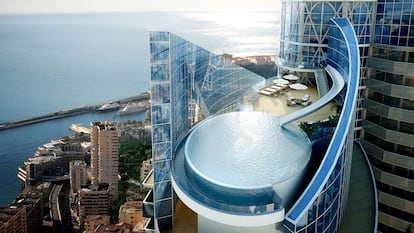
Luxury in Monaco and Chicago, secret projects in Beijing
Mallya’s presidential abode is one extreme example of a trend that has been picking up speed in recent years among the global billionaire set: hiding personal residences of a more and more ambitious scale on roofs and overhangs — often, crowning new-school skyscrapers. Such is the case of Sky Penthouse, which is located atop the Tour Odéon de Monte Carlo and was created by architect Alexandre Giraldi and interior designer Alberto Pinto. Considered by Property Journal to be one of the most expensive private residences in the world (the publication estimates its value at around $400 million), the Sky is a rare, extremely luxurious five-story penthouse. Imagine a Mediterranean villa plopped down on top of a 520-foot building, an ode to uninhibited opulence that to some, is a showing of impeccable taste and revolutionary architectural concept.
To identify this trend’s precursor, the missing link in this exclusive line of castles in the air, one might turn to the 9,500-square-foot attic valued at $16.4 million that real estate agent Mark Icuss “discovered” two years ago on North Lake Shore Drive, a central thoroughfare in Chicago. Though its scale is much smaller than that of Giraldo’s masterpiece and Mallya’s narcissistic delirium, its concept is similar, having been constructed atop a 23-story building.
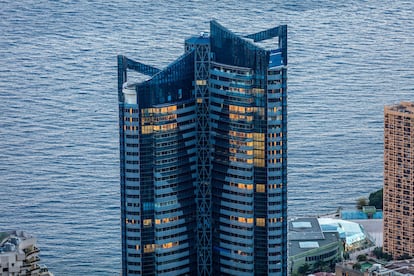
A project of Sicilian architect Rosario Candela, the mansion features a portico, ornamental fountain and garden. Construction began on the home in 1928 and was finished in 1930. It has had three owners since, starting with the banker George Woodruff. Today, it is one of the most desirable private residences in Chicago. For Icuss, its gleaming quarters, which are nearly invisible from the exterior and accessible via private elevator, are exceptional for several reasons: it is the only building Candela designed outside New York state, and it’s “one of the most peculiar outdoor spaces you will find, not only in Chicago, but in the entire United States.”
But few aerial mansions can compete when it comes to the eccentricity of the secret project of Zhang Lin, a university professor and amateur architect who spent six years of his life dedicated to building, with his own funds, a “mansion in the mountains.” The only problem, as explained in a humorous article by British reporter Helen Collis, is that his “mountain” was a residential complex just outside of Beijing and the work on it that he carried out in secret lacked the approval of both authorities and his rather perplexed neighbors. Lin amassed, in the words of Collis, “several tons of stones and debris” that eventually formed a detached penthouse with a rather wild-looking garden. A deranged and solitary feat, bordering on the criminal, and one of which no trace remains: the authorities chose to destroy the structure because, among other factors, it endangered the stability of the original building.

Human scale, parasitic architecture
Other examples of residential architecture at high altitude have been much more modest. Take for example, the discreet, functional two-story house with a triangular roof built atop an old wagon and car factory in the university town of Syracuse, New York. Mallya would likely use such a space as a storage room or pet kennel, but its current tenants love living in such a practical and unique location. Similar in concept, if rather more questionable in execution, is a penthouse in the city of Zimmerman, Minnesota, which is as much of an architectural curiosity as it is a symbolic protest against rising prices of land in the United States.
Publications like Love Property have made noise in recent years as to the proliferation of homes built on pre-existing rooftops. Some of these are little more than rarities or of frankly dubious taste. But worth considering is Casa Parásito, which was built in Quito, Ecuador by El Sindicato Arquitectura architectural studio. The collective of sustainable construction activists offer a boiled-down approach to the sky-high ideas of Mallya, Giraldi, Candela and Lin, and propose the house in the clouds as a dignified housing solution for the inhabitants of cities as overcrowded as the Ecuadorian capital. A tiny house that barely occupies 130 square feet, Casa Parásito possesses an air of commendable beauty and order. Compared to the castles in the air and massive penthouses with pergola and garden, such “parasitic” architecture puts roof homes within the reach of any budget.
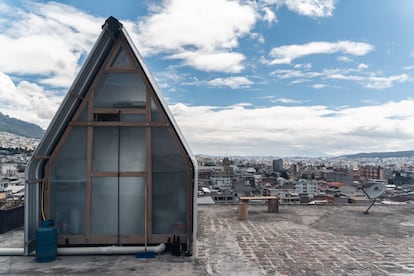
Sign up for our weekly newsletter to get more English-language news coverage from EL PAÍS USA Edition
Tu suscripción se está usando en otro dispositivo
¿Quieres añadir otro usuario a tu suscripción?
Si continúas leyendo en este dispositivo, no se podrá leer en el otro.
FlechaTu suscripción se está usando en otro dispositivo y solo puedes acceder a EL PAÍS desde un dispositivo a la vez.
Si quieres compartir tu cuenta, cambia tu suscripción a la modalidad Premium, así podrás añadir otro usuario. Cada uno accederá con su propia cuenta de email, lo que os permitirá personalizar vuestra experiencia en EL PAÍS.
¿Tienes una suscripción de empresa? Accede aquí para contratar más cuentas.
En el caso de no saber quién está usando tu cuenta, te recomendamos cambiar tu contraseña aquí.
Si decides continuar compartiendo tu cuenta, este mensaje se mostrará en tu dispositivo y en el de la otra persona que está usando tu cuenta de forma indefinida, afectando a tu experiencia de lectura. Puedes consultar aquí los términos y condiciones de la suscripción digital.
More information
Archived In
Últimas noticias
There is as much life left to discover on planet Earth as that which is already known
Dozens presumed dead, around 100 injured in fire at Swiss Alps bar during New Year’s celebration
Is porn for women different from conventional porn? We spoke to those who make it
Cartagena de Indias is sinking: What can the city do to mitigate it?
Most viewed
- David King, chemist: ‘There are scientists studying how to cool the planet; nobody should stop these experiments from happening’
- Reinhard Genzel, Nobel laureate in physics: ‘One-minute videos will never give you the truth’
- Oona Chaplin: ‘I told James Cameron that I was living in a treehouse and starting a permaculture project with a friend’
- Sinaloa Cartel war is taking its toll on Los Chapitos
- The Interoceanic Train, the Mexican alternative to the Panama Canal

